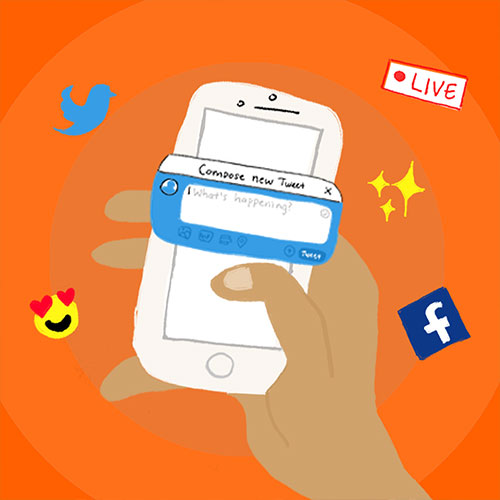Nowadays it seems like most organizations share live updates of their events via social media. Think about events like the American Music Awards tweeting celebrity red carpet looks or even local events such as Mayor Bowser’s Maternal & Infant Health Summit live tweeting. Why do organizations share their event via social media? Because of the added value! Social media can increase your event’s engagement by reaching a wider audience, even those who cannot physically attend your event.
If you want to broaden your event’s success, there are some key things to keep in mind before you start live posting. While it may seem easy to post at the moment, having a plan in place can help you prevent any foreseeable chaos. Here’s how my colleagues and I plan for a live event.
1. Make a list of things to share
What do you want to share on your social media accounts? Do you want to share pictures, videos, speaker quotes, or pre-drafted graphics? Create a list of action items you want to tackle when you live post. Having this list will allow you to prioritize your work and guarantee that you cover all of the messages you want to share on social media.
2. Create a hashtag
For your event, you will probably want to create a hashtag to accompany it. Associating a hashtag with your event will allow you to track the conversations and engagement from your audience. It also lets your audience follow along with any updates and participate in the conversation. Simply create a short hashtag that aligns with your event. For Mayor Bowser’s Maternal & Infant Health Summit, we selected #DCMaternalHealth as the official hashtag. Your hashtag should be no more than 18 characters to ensure that it’s user-friendly. A wordy hashtag may discourage people from using it, and it may create an issue with platforms like Twitter that only allows 280 characters.
3. Track your hashtag
Now that you created your perfect hashtag, you will need tools to track it. You may want to know how many people used your hashtag, the number of impressions, amount of engagement, and more. There are a couple of great tools available to gather these metrics. Consider using Sprout Social, TweetReach, and Keyhole to keep track of your analytics.
4. Create a lookbook
Will you have multiple speakers at your event? If you are covering their talking points via social media, it might be useful to have some key information about them. For our coverage at Mayor Bowser’s Maternal & Infant Health Summit, our team created a lookbook that included information about the speakers. In this lookbook, we included the speaker’s full name, title, organization, and social media handles. Having this information readily available made it easier to tag and quote speakers during their live session.
5. Have your equipment ready
Before your event, you will also need to decide what type of technology you will use to post your messages. Will you use your laptop, cell phone, or iPad? You need to understand your event’s layout and setup to select the best technology. If you are sitting down you may opt for a laptop, but if you are running around capturing content you may decide that using your cell phone or iPad is your best option. You will ultimately decide your preferred and most comfortable method for posting. Finally, make sure you have reliable charging options such as accessible outlets or portable chargers. You don’t want your cell phone or laptop to give out as you’re typing an important tweet about your event.
6. Make sure you have reliable internet
During big events, it’s common that internet access is unreliable and slow. And that’s the last thing you want to experience during a live event. Make sure you have reliable internet access whether it’s via WiFi, Hotspot, or via your internet provider.
7. Assign roles
Depending on the size of your event and number of social media accounts, you may need more than one person managing your content. Assign roles on who will be taking pictures, capturing live quotes, or recording videos. Every person involved should have a clear role and plan to execute their assigned task.
8. Engage with your audience
You might be pushing out 20 posts per minute on social media, but is your audience participating? Make sure you are not wasting your time and energy on only posting content. You also need to engage with your audience. Are people using your hashtag? Give a like or leave them a comment to let them know you are also listening to them. Having this open and mutual relationship on social media will not only increase engagement but show your audience that you value their participation.
Next time you have an event, keep these tips in mind. You will thank yourself later!
